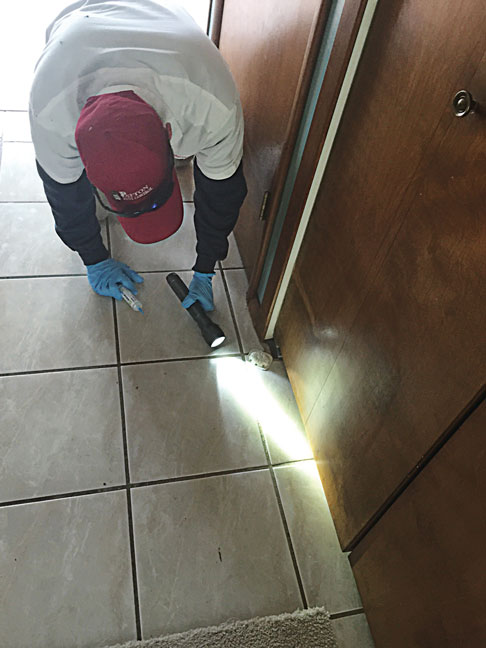
Inspection is a critical first step in the ant management process. Take your time and be thorough. PHOTO: Heather Gooch
“Make sure enough material is being used, per label instructions. Also, don’t assume ants in the kitchen are not coming from the basement or attic.”
— Jeremy Roesel, operations manager, Rentokil North America, Reading, Pa.
“Show do-it-yourselfers that we can control the ants. Sell an ongoing program; you are protecting their properties.”
— Jerry Zapf, owner, Sure Thing Pest Control, Cincinnati, Ohio
“Find the source of the ants. Don’t allow customers to use their own chemicals over yours. Don’t go back for retreats until it’s been two weeks since your last treatment.”
— Sheri Monroe, president, Grand Rapids Pest Control, Grand Rapids, Mich.
“Keep an open line of communication with customers who have ant issues.”
— Richard Sims, pest control division manager, Curry’s Termite, Pest & Animal Control, Little Rock, Ark.
“Ask your customer questions. Don’t treat every job as if it’s the same. Take your time and come up with a game plan. Don’t rush into a treatment.”
— Don Aaron, owner, Pest Free, Wichita, Kan.
“Eliminate conducive conditions. Be thorough and don’t overlook the obvious. Don’t promise what you can’t deliver, as far as time needed to control the ant infestation.”
— Jim Merrill, entomologist, F&W Pest Control, Wrentham, Mass.
“Don’t treat before conducting an inspection. A thorough exterior inspection could reveal where the ants are getting in, thus reducing the amount of product needed to solve the problem.”
— Randy Darrah, ACE, pest department manager, Slug-A-Bug, Melbourne, Fla.
“Listen to your clients when explaining where ants were sighted, but don’t assume that the ants were sighted at their entry points. Correctly identify the ant species involved, then inspect for entry points in the interior and on the exterior. Look for food, trails and harborage. Explain to the client the expectations and timeframe involved in control.”
— Earl MacLean, technician, Baxter Pest Professionals, Muncie, Ind.
“Maintain an open line of communication with your employees. Conduct ride alongs and quality control inspections. Do not micromanage, but talk to your technicians and ask them about their product choices. Take continuing education classes.”
— Chris Snyder, president, Quest Termite & Pest, Bethlehem, Pa.
Leave A Comment